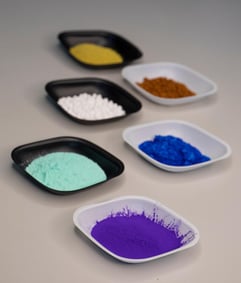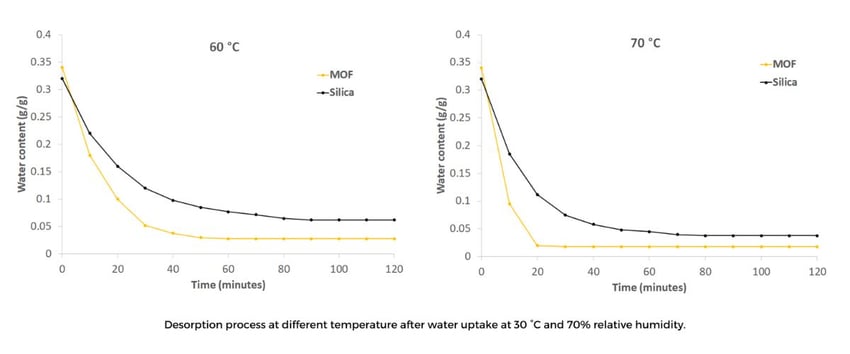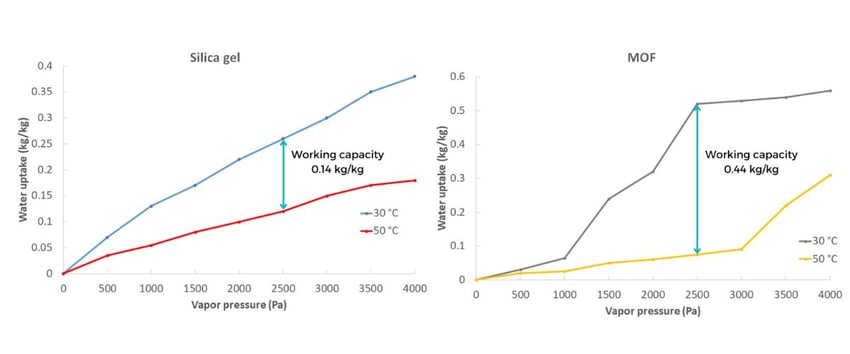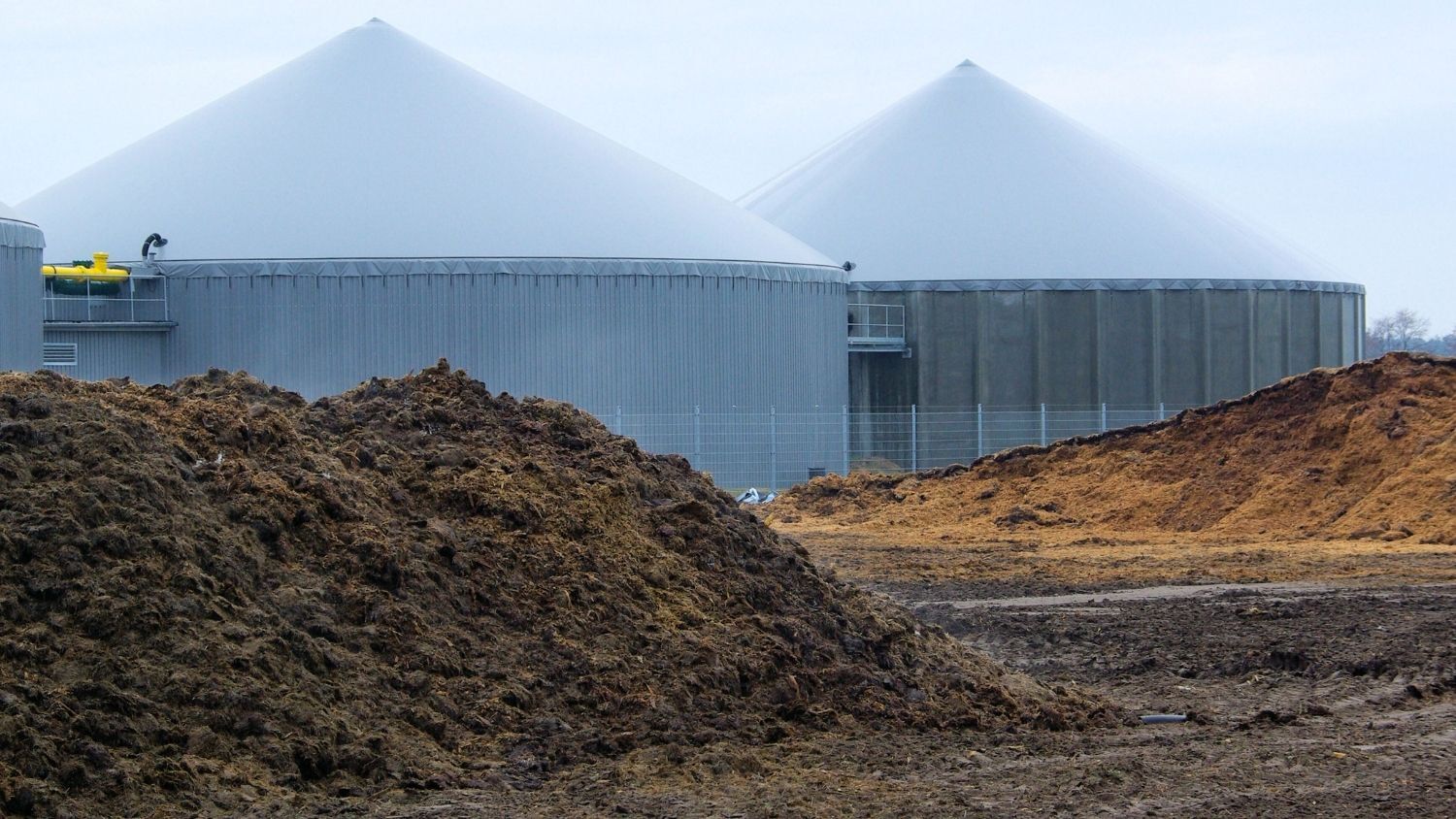Adsorption over condensation technology?
Since condensation technology is based on the reduction of air temperature to below the dew point, it requires high energy input due to further heating needed to achieve comfortable air temperatures. When using advanced adsorption technologies, the energy requirements can drop considerably while showing good dehumidification performance. For more information, please read our previous blog about the technology comparison.
Adsorbent materials for air dehumidification
 Typical adsorbent materials include silica gel, zeolites, and more recently, Metal-Organic Frameworks (MOFs). For dehumidification, sorbent materials must possess a particular affinity towards water molecules, but how much affinity they have will impact their performance and the temperature required for the regeneration process. For instance, zeolites show a significant water uptake at low relative humidity due to strong binding between the sorbent and the water molecules. However, this leads to high temperatures for regeneration.
Typical adsorbent materials include silica gel, zeolites, and more recently, Metal-Organic Frameworks (MOFs). For dehumidification, sorbent materials must possess a particular affinity towards water molecules, but how much affinity they have will impact their performance and the temperature required for the regeneration process. For instance, zeolites show a significant water uptake at low relative humidity due to strong binding between the sorbent and the water molecules. However, this leads to high temperatures for regeneration.
MOFs are crystalline materials consisting of metal centers and organic linkers which can be designed to show specific features by selecting their structural components. Compared to other adsorbents, MOFs facilitate the modulation of their hydrophilicity and adsorption kinetics. Other features that can be controlled during MOF synthesis include pore size and shape; owing to this advantage, they show higher surface area, which is related to their superior adsorption capacity. For instance, MOFs possess up to 2.5 times higher surface area compared to commercially available silica gel.
Enhanced productivity with MOFs
In dehumidification adsorption-based systems, the overall performance is related to the adsorption capacity, energy efficiency, and the time required for an adsorption/desorption cycle. The adsorption capacity and the time needed for cycling will determine the system's productivity, meaning the amount of air that can be processed.
Recent studies have tested the productivity of MOFs and commercial silica gel under the same environmental conditions, i.e., 30 °C and 60, 70, and 80% relative humidity. The results show that MOFs outperform at least 15% of the adsorption capacity of silica gel under high relative humidity conditions. For instance, at 30 °C and 80% RH, silica gel showed an adsorption capacity of 340 g/kg after two hours, while MOFs had 390 g/kg. The higher adsorption capacity of MOFs is related to their superior surface area and the tuned chemistry inside their pores for water adsorption.
During desorption, desiccant materials are tested to know the minimum temperature required for regeneration and the time needed to remove the water content. Silica gel adsorbent required at least 70 °C to achieve sufficient regeneration with times longer than 60 minutes. MOFs can be effectively regenerated at 60 °C, but at 70 °C, the time required is reduced to only 20 minutes (see graphs below). These results indicate that MOFs can increase up to three times the productivity at 70°C compared with commercial silica gel materials.

Unique features of MOFs
MOFs have been shown to outperform other adsorbents regarding their water adsorption capacity. This feature is related to their unique pore structure and chemistry that possesses balance, giving them amphiphilic properties. For instance, by modulating the length of the organic linker or by post-synthetic chemical functionalization, the pore size can be tuned for high moisture capture and relatively easy regeneration.

The isotherms are a great tool to show why MOFs are great candidates for air dehumidification. The graphs above show the isotherms for typical silica gel and MOF materials. In these isotherms, we can find that at moderate vapor pressure (2100 Pa corresponding to 50% RH), there is a big difference in water uptake for the MOF material with a temperature difference of only 20 °C; under these conditions, MOFs can be cycled removing up to 90% of the water content. Under the same conditions, silica gel will require higher temperatures (typically 80 °C or higher) to improve its performance. Therefore, the s-shape isotherm showed by MOFs allows them to reduce dramatically the energy requirement for dehumidification operation.
Please visit our previous blogs to learn more about MOFs' amazing world. Contact us to know which MOF is best for your application.




.jpg)
